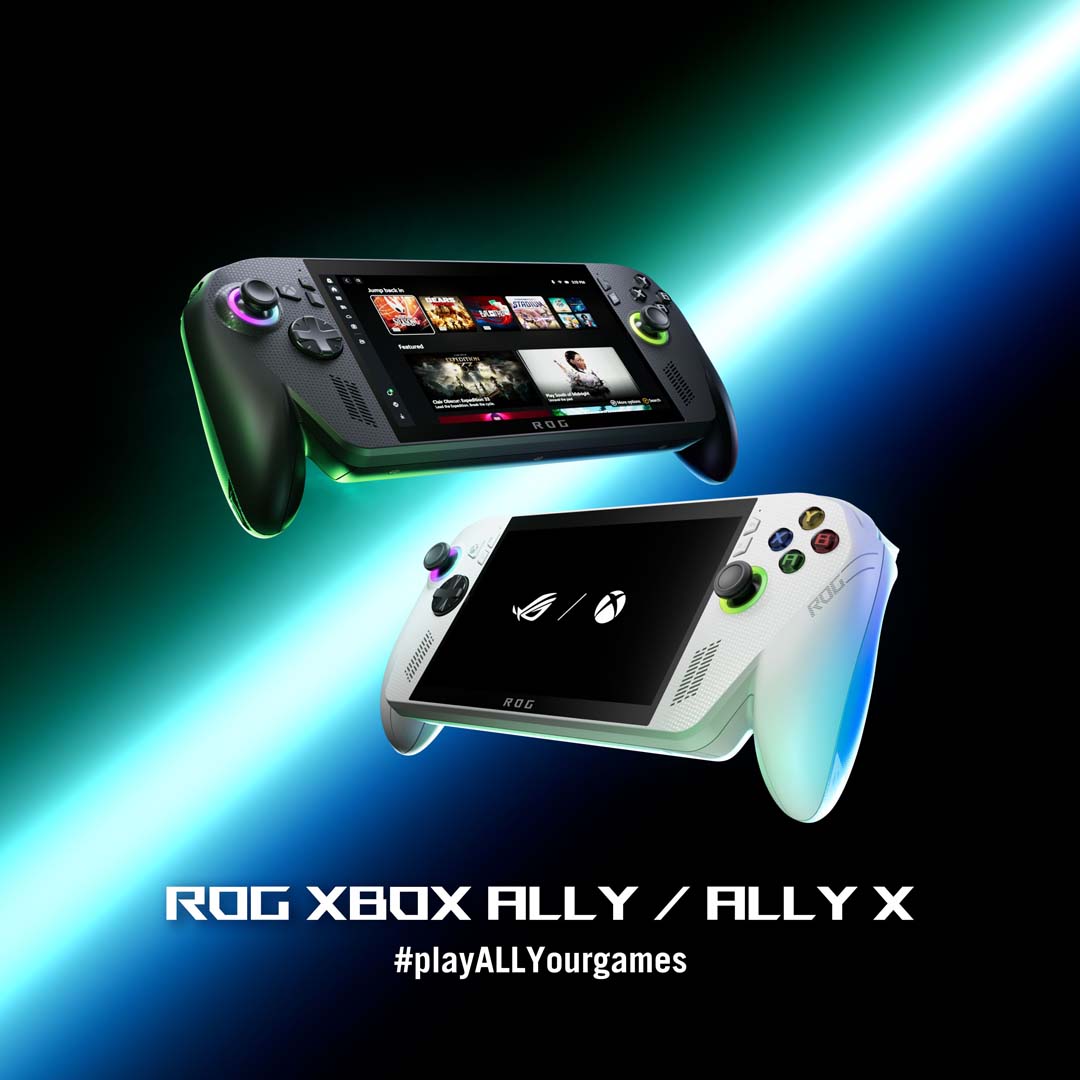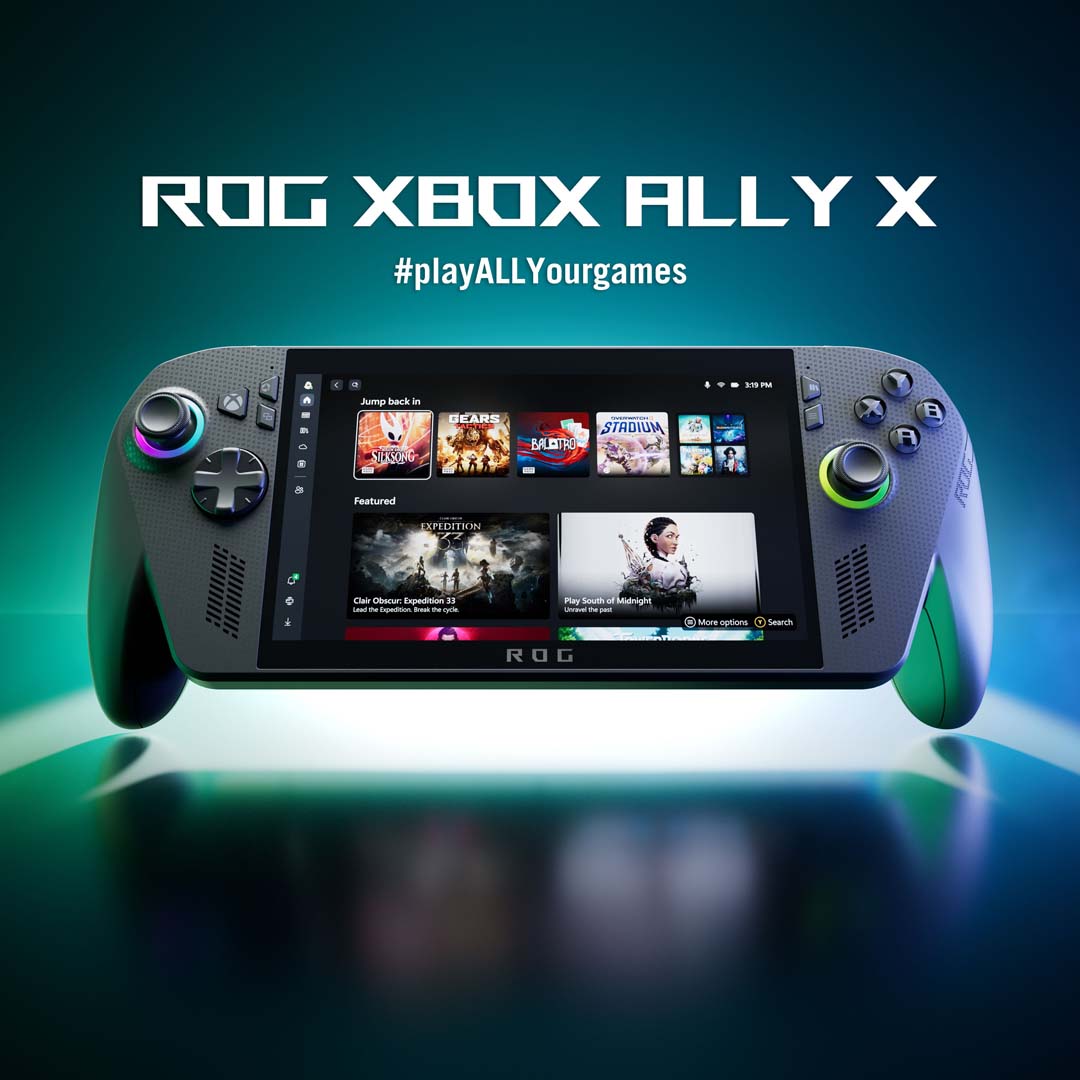
The rise of handheld gaming PCs has pushed companies to fine-tune performance, comfort, and user experience. ASUS, through its Republic of Gamers (ROG) brand, has teamed up with Xbox to introduce two new contenders: the ROG Xbox Ally and the more advanced ROG Xbox Ally X. Both aim to bridge the gap between console and PC gaming in a compact form—but they do so with different levels of power and features.
Let’s break down how these two devices compare when it comes to hardware, design, software experience, and long-term usability.
Familiar Shape, But Some Extra Refinements
Both models adopt the same general form factor, but the Ally X benefits from subtle changes aimed at more demanding users. ASUS has clearly taken feedback from previous handheld iterations into account, tweaking the shape and grip for a more gamepad-like experience. The Ally X adds impulse triggers—a familiar feature to Xbox players—for more nuanced control, especially in titles where analog input matters.
Texturing has also been refined on both devices, but the Ally X leans further into ergonomics with slight improvements in weight distribution and grip support. Despite being a bit heavier than its sibling, it’s designed to feel more balanced in-hand during long gaming sessions.
One Ecosystem, Two Different Power Levels
Memory and storage follow suit—16GB of RAM and 512GB SSD for the base Ally, while the Ally X steps up to 24GB RAM and 1TB SSD. Battery life also sees a significant jump with the Ally X’s 80Wh battery compared to the 60Wh in the standard model.
The performance edge clearly favors the Ally X, especially for users aiming to play AAA games with better fidelity and frame rates. However, the base Ally still holds its own for mainstream and indie gaming without breaking efficiency or portability.

A Shared Software Vision
What’s particularly noteworthy is the Xbox-first software experience across both models. As soon as you boot up either device, you’re greeted with a full-screen Xbox interface. It’s not just a re-skinned launcher—this environment is tuned to make navigating games with joysticks and buttons smooth and direct, while still giving users full access to the flexibility of Windows 11.
That said, there’s no significant difference in software capability between the two devices. Both support widgets via the Game Bar, and both are open to mods, external game launchers, and PC-level multitasking. Essentially, the Ally X doesn’t unlock extra features here—it just gives you more power to run them simultaneously or at higher quality.
For Whom Does the Extra Power Make Sense?
The ROG Xbox Ally is likely best suited for users who primarily play indie games, older titles, or aren’t pushing their handheld for long sessions on demanding software. It’s lighter, consumes less power, and still delivers a high refresh rate on its 7” screen. It also retains Hall Effect triggers, a feature appreciated by gamers wary of analog stick drift.
The Ally X, meanwhile, is aimed at users expecting performance more akin to a mid-tier gaming laptop in their hands. With its larger battery, better processor, and additional RAM, it’s better equipped for longer sessions and graphically intense games. It’s also more future-proof, particularly with its inclusion of a dedicated NPU for AI workloads.
Conclusion
In short, both the ROG Xbox Ally and Ally X share the same DNA but diverge when it comes to raw horsepower and endurance. The Ally is an efficient, accessible handheld built for everyday gaming. The Ally X, on the other hand, is a performance-first option for those who want more headroom in both hardware and ergonomics. Both models are expected to launch in various global markets during Holiday 2025, with regional rollout continuing afterward.

Technical Specifications Comparison
| Feature | ROG Xbox Ally | ROG Xbox Ally X |
|---|---|---|
| Operating System | Windows 11 Home | Windows 11 Home |
| Processor | AMD Ryzen™ Z2 A | AMD Ryzen™ AI Z2 Extreme |
| Display | 7” FHD (1080p), IPS, 500 nits, 120Hz, FreeSync Premium | 7” FHD (1080p), IPS, 500 nits, 120Hz, FreeSync Premium |
| Display Protection | Corning Gorilla Glass Victus + DXC Anti-Reflection | Corning Gorilla Glass Victus + DXC Anti-Reflection |
| Memory | 16GB LPDDR5X-6400 | 24GB LPDDR5X-8000 |
| Storage | 512GB M.2 2280 SSD | 1TB M.2 2280 SSD |
| Battery | 60Wh | 80Wh |
| Weight | 670 grams | 715 grams |
| Triggers | Hall Effect analog triggers | Impulse triggers |
| I/O Ports | 2x USB 3.2 Gen 2 Type-C (DisplayPort 1.4), microSD, 3.5mm audio | 1x USB4 (DisplayPort 2.1), 1x USB 3.2 Gen 2 Type-C (DisplayPort 2.1), microSD, 3.5mm audio |
| Connectivity | Wi-Fi 6E, Bluetooth 5.4 | Wi-Fi 6E, Bluetooth 5.4 |
| Included Accessories | 65W charger, stand | 65W charger, stand |
| Haptics | HD haptics, 6-axis IMU | HD haptics, 6-axis IMU |
| Back Buttons | 2x assignable | 2x assignable |